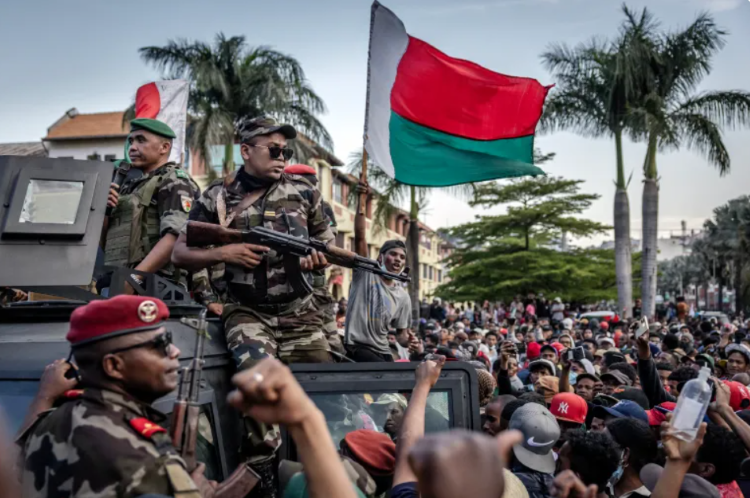It takes more than nine hours to drive from Melbourne to Sydney, and close to 10 to continue from there up to Brisbane. Other Australian state capitals, like Adelaide or Perth, are even more remote, to say nothing of somewhere like Alice Springs, situated at almost the dead centre of this country-continent.
Travelling by car between these cities can rival the worst drives in Canada for monotony: a constant film strip of trees, overpass, gas station, dead animal, trees, overpass, gas station, dead animal, dead animal, dead animal (Australia’s native fauna is particularly vulnerable to the miles and miles of highways), repeating over and over until the driver is blurry-eyed with boredom.
Beginning in the 1960s, enterprising Australians came up with a solution to this problem: building giant concrete and fibreglass statues on the side of the road, to offer drivers a diversion and, hopefully, persuade them to part with some money for refreshments and souvenirs.
Located in West Ballina, New South Wales, the nine-metre tall Big Prawn is one of the most well-known Big Things.
Within decades, Big Things, as they are known in Australia, “had become a beloved fixture of road trips and summer holidays,” writes Amy Clarke, a senior lecturer in history at the University of the Sunshine Coast.
While construction fell off in the 1980s, it picked up again post-2000, and Ms. Clarke said the country is now once again “in the middle of a boom period” for Big Things.
“I thought the COVID pandemic might have slowed that down, but it doesn’t seem to have,” she told The Globe and Mail. “Road trips were far more accessible and affordable before plane travel bounced back, and even now, flying is quite expensive compared to what it was pre-COVID.”
What is your favourite roadside attraction in Canada? Tell us about it
Once dismissed as kitschy or slightly embarrassing by mainstream Australia, in recent decades, Big Things have become a beloved asset of Australiana, and many have received official heritage status, recognized as works of folk art.
The Big Koala sits along a stretch of highway in Gundagai, New South Wales.
“Because European settlement was so recent, Australia doesn’t have historic old buildings like in other countries and the Big Things are a way of saying ‘We’re here. This is our place,’” artist Reg Mombassa told The Sydney Morning Herald in 2009. “They’re like our pyramids, our temples.”
Australians are often quite annoyed, Ms. Clarke said, when she points out Big Things are not unique to their country: There are more such monuments in Canada than in Australia, and more in the U.S. than in both the other countries combined.
“Whenever I mention to Australians that there are thousands of them out there, they get upset, because it’s our thing, you know?” she said.
In part, this is because Australian state tourism boards, and operators of Big Things themselves, have done a much better job marketing their huge sculptures than in many other countries, particularly in the age of social media, turning selfie-seeking tourists into unpaid advertisers.
“Saskatchewan for instance has loads of them, but some of the tourist bodies there are only just now starting to put websites up,” Ms. Clarke said.
The Globe visited half a dozen Big Things during a reporting trip across Australia in May, and many were still enjoying a decent stream of customers even during the country’s tourism off-season. In its most recent annual report, the Big Banana said it brought in 11.8-million Australian dollars in revenue in 2024, an increase on the previous year and “remains the market leader in tourism in the region.”
Originally built to promote the local banana trade, the attraction has since expanded to include a theme park and arcade, located on the side of the highway near Coffs Harbour, a town in New South Wales around 540 kilometres north of Sydney.
Similarly, the Big Merino, a giant sheep located an hour’s drive from the Australian capital of Canberra, was attracting a respectable number of selfie-takers and souvenir buyers, with an attached shop offering everything from socks made from local merino wool to keychains and stickers.
The most extensive selection of keepsakes was to be found in Glenrowan at the Big Ned Kelly, which combines the draw of a giant statue with being the site of the final stand of Australia’s most famous and bizarrely beloved criminal.
The Big Ned Kelly, dedicated to Australia’s most infamous outlaw, located on the site of his last stand in Glenrowan, Victoria.
While not particularly big, the story behind the Dog on the Tucker Box makes it a popular roadside attraction in New South Wales.
The best, and perhaps most Australian, backstory to a roadside attraction belongs to the Dog on the Tucker Box (“tucker” is an Australian slang term for food). A plaque on the statue in northwestern New South Wales recounts a popular folk tale of a teamster in the 1850s who, after suffering a bogged down wagon and broken wheel, “gave up the job and went to have his lunch.”
“But here, to top off his run of bad luck, he found his dog sitting – or worse – on his tucker box.”
Ms. Clarke said most Big Things are not particular money spinners, running up hefty maintenance costs as they sit outside exposed to the elements.
“They’re not the most financially sound investments,” she said. “They don’t tend to make money themselves unless there’s a business attached, and even then, not much. But they do tend to bring money into the wider area.”
That has led to most newer Big Things being produced by local governments, which can help make them financially sound but also means the subjects trend less kitschy and weird.
This is a contrast to the 1960s when the Big Things were first being built, Ms. Clarke said, and were often the result of “a bunch of blokes with a load of stubbies of beer, making them with chicken wire and papier-mâché and whatever else they had around.”
What’s your favourite roadside attraction in Canada?
Whether it’s a statue next to a road in your hometown or a monument you’ve passed by only once, we want to hear about your favourite roadside attraction in Canada. Share your thoughts in this form and if you want to send us photos from your last visit, send them to us here.











